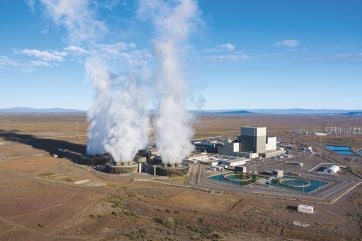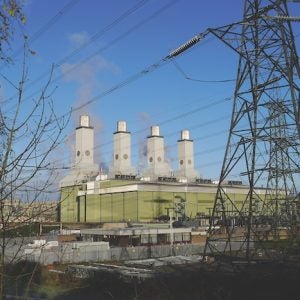
Believing that waterways used as cooling sources for nuclear power plants could get warmer due to climate change, climate scientists and nuclear engineering specialists at the US Department of Energy’s Argonne National Laboratory are joining forces to develop a plan B for nuclear power in Richland, Washington.
The plan is to use Gateway for Accelerated Innovation in Nuclear (GAIN) funding from DOE to work with Energy Northwest to inform the design and selection of future nuclear reactor cooling systems and assess their impacts on electricity cost.
Rick Vilim, manager of the Plant Analysis and Control and Sensors department in Argonne’s Nuclear Science and Engineering division, leads the effort with Rao Kotamarthi, senior scientist in Argonne’s Environmental Science division.
Argonne is working with Energy Northwest and pebble-bed high temperature gas cooled reactor developer X-energy to determine how an existing nuclear power plant and a proposed advanced reactor design should be configured for the local climate.
Vilim notes that the most economic and best source of cooling is a local, flowing waterway, such as a lake or a river, used to provide “wet” cooling. That’s the approach employed at Washington’s nuclear power plant, the Columbia generating station in Richland. The Columbia generating station provides roughly 8% of the state’s electricity. It relies on a steady, cool flow of water from the Columbia River.
However, when considering construction of future nuclear power plants, Energy Northwest thought it prudent to develop a contingency plan if the river conditions change. Despite the relatively wet climate of its most populous city, Seattle, Washington state is quite temperate and arid east of the Cascade mountain range. There, Washington state is characterised by hot summers and cool winters. If changing climate models indicate that hotter, drier days lie ahead, more aridity will affect the volume, flow and temperature of the Columbia River.
“It’s a very commendable way of thinking about climate change — to plan before doing something versus not thinking about it and trying to adapt afterwards,” said Kotamarthi of Energy Northwest’s efforts. “A lot of people are confused about how to use the global climate data that exists, to make it actionable. At Argonne, we are working to provide very regional climate data in a form that industry can act on.”
Kotamarthi and his team have developed the expertise to perform impact analyses of risks from a changing climate, such as drought, heat waves and wildfire. The team can also provide translation of what that data means for local, immediate decisions and recalculate the data to demonstrate the effect 25 or 50 years from now. High performance computing resources at Argonne, such as the Argonne Leadership Computing Facility, a DOE Office of Science user facility, give Kotamarthi and his team the capability to develop very high resolution regional scale climate model projections. Current model resolution is about 12 km, but newer models in development are expected to get as specific as a 4 km area.
“One of the biggest changes in the USA is going to be how precipitation like rain, snow and other precipitation events happen,” Kotamarthi said. “We may have really intense events with large amounts of rainfall in a very short time, followed by periods of no rain. These flash floods and flash droughts will make managing water a completely different task.”
Source: Kristen Mally Dean, Argonne National Laboratory






